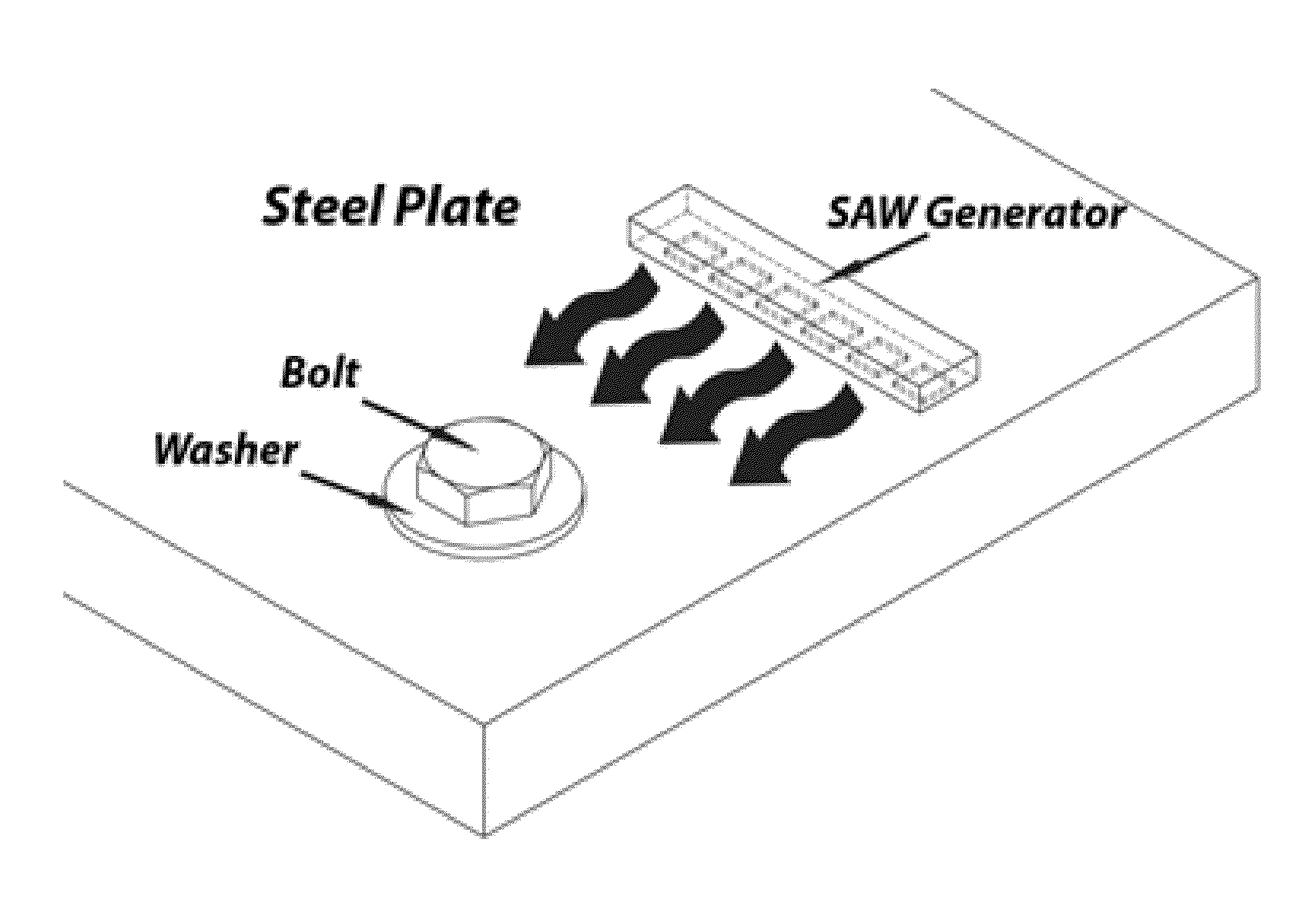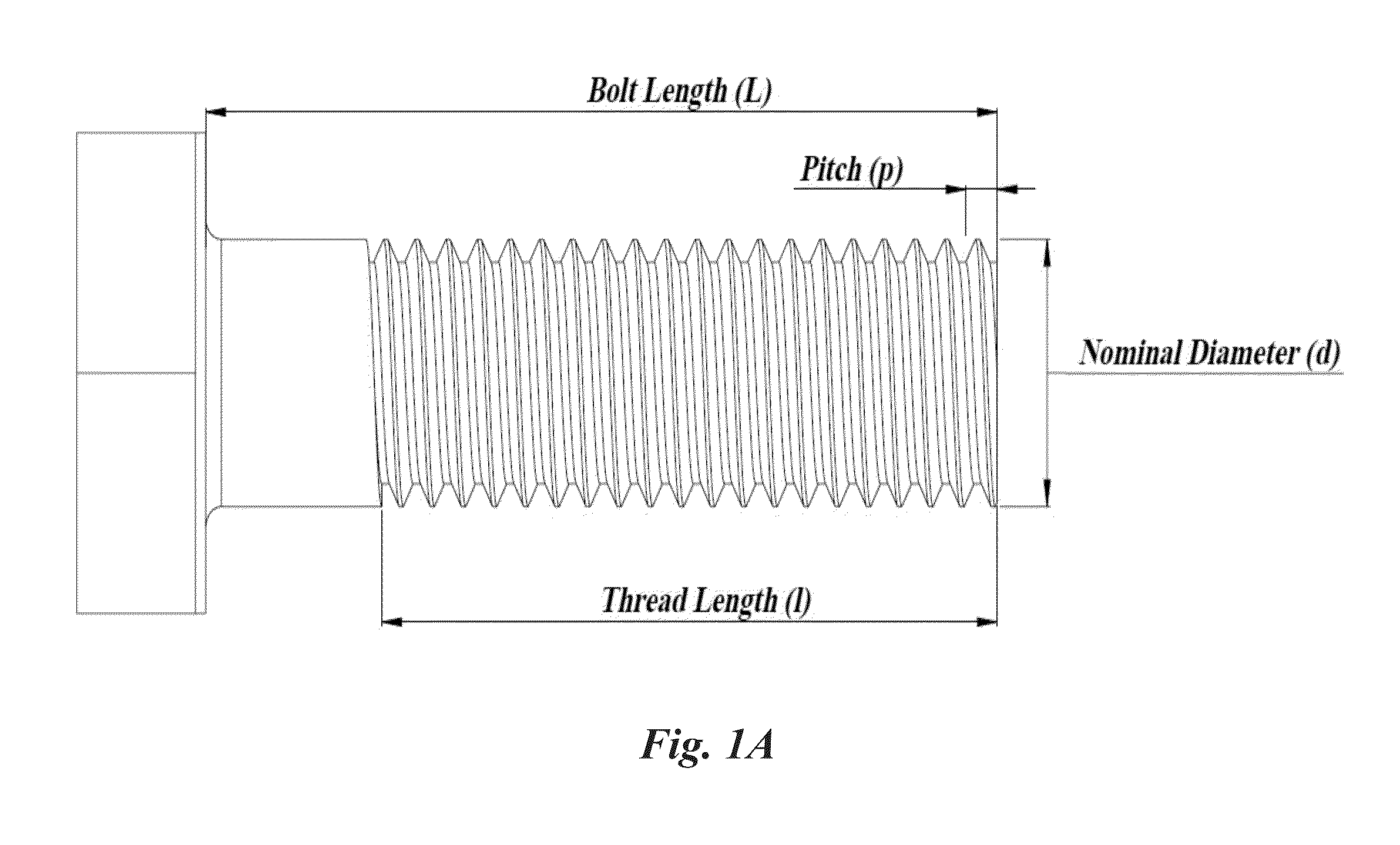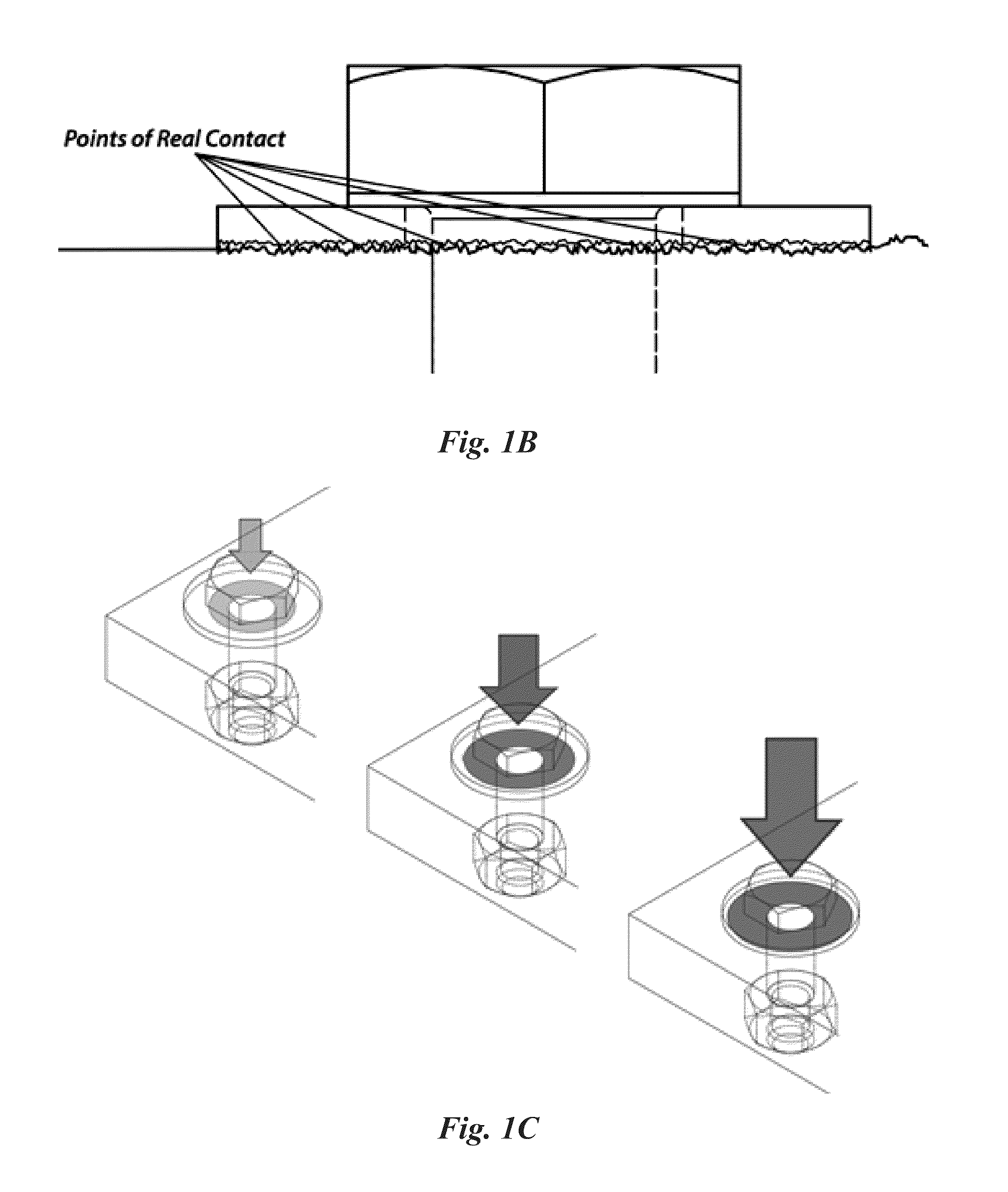Active ultrasonic method of quantifying bolt tightening and loosening
a bolt tightening and loosening, active ultrasonic technology, applied in the direction of force/torque/work measurement apparatus, screws, instruments, etc., can solve the problems of typical maintenance operation, such as tension measurement, internal stress checking and crack development monitoring, and is not practicable or regularly practiced
- Summary
- Abstract
- Description
- Claims
- Application Information
AI Technical Summary
Benefits of technology
Problems solved by technology
Method used
Image
Examples
example 1
Tension Evaluation of a ¼ inch Grade 8 Bolt
[0115]An embodiment of the proposed method was investigated to test higher tension levels. Grade 8 bolts have yield strength almost three (3) times higher than stainless steel bolts [50], which are used in Examples 2 and 3. Additionally, a stainless steel washer is fixed to the bolt in order to increase the expansion capability of the RAC.
[0116]A 5-MHz, 50-array elements synthetic array was utilized. The pitch was chosen as 0.0254 cm in order to sample the beamspace precisely. In all, an almost linear “preload-boundary distance” relation was observed, but as expected, the change in the preload slightly affected the boundary distance in too low and too high preload regions. In other words, two saturation regions and a linear region were clearly observed. SAW beams were used to measure the pressure between the bolt and the surface. If a phased array is used, the electronic steering of the array would enable simultaneous health measurements of...
example 2
Tension Evaluation of a ¼ inch Stainless Steel Bolt
[0165]This example tests a stainless steel bolt of ¼ in diameter installed in a 1018 steel plate. As the RAC growth affects the position of the SAW main reflections, it is necessary to establish very precisely where those reflections take place. It was determined that a synthetic phased array imaging method was effective for detecting the location of very small holes in a steel plate, producing reconstructed images with accurate longitudinal resolution. Thus, this imaging system was used in this particular example.
[0166]Experimental Design
[0167]A synthetic phased array (SPA) is employed in the following experiments. A transducer with central frequency of 5 MHz, diameter of 0.5 in and an array pitch (p) of approximately ¼ of the wave length (λ / 4) was selected to aim for high longitudinal resolution. The longitudinal position of the acoustic wall was used to characterize the RAC changes, necessitating high longitudinal resolution. The...
example 3
Tension Evaluation of a ½ Inch Stainless Steel Bolt
[0194]This example tests an exemplary embodiment of the current methodology with a ½ inch 13UNC stainless steel bolt. The larger bolt allows the application of higher tension levels. The larger bolt also increases the geometric area of contact, thus likely providing larger changes in the RAC.
[0195]Experiment Design
[0196]The parameters utilized in this example were array pitch, number of elements in the array, distance to the target, and the torque applied. The array pitch (0.01 in) is maintained because the same transducer was used (i.e., transducer with 5 MHz of central frequency and ½ in of circular aperture). Additionally, the target distance was also kept constant.
[0197]The array aperture is increased due to the target size. It is necessary to have a fixed boundary that works as framework to clearly establish the movement of the reflective boundary. The plate edge is used for this purpose. Then the array aperture is selected to ...
PUM
 Login to View More
Login to View More Abstract
Description
Claims
Application Information
 Login to View More
Login to View More - R&D
- Intellectual Property
- Life Sciences
- Materials
- Tech Scout
- Unparalleled Data Quality
- Higher Quality Content
- 60% Fewer Hallucinations
Browse by: Latest US Patents, China's latest patents, Technical Efficacy Thesaurus, Application Domain, Technology Topic, Popular Technical Reports.
© 2025 PatSnap. All rights reserved.Legal|Privacy policy|Modern Slavery Act Transparency Statement|Sitemap|About US| Contact US: help@patsnap.com



